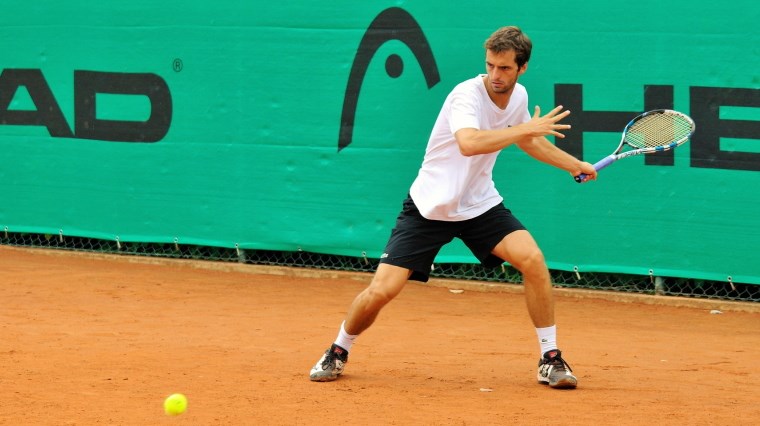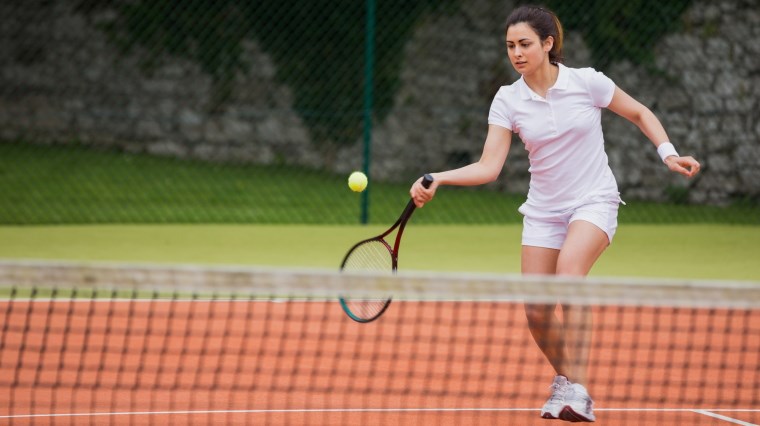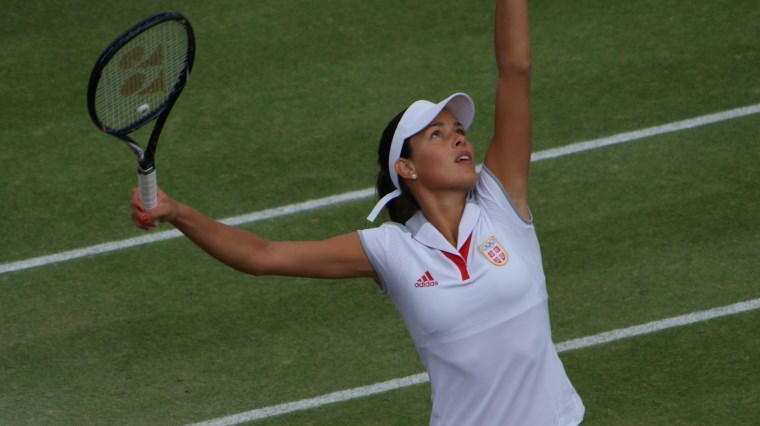How To Choose The Best Tennis Racquet For Your Skill Level

Choosing a tennis racquet isn’t as simple as picking the first one off the shelf. Improving your understanding of tennis racquet specs and tennis strings is a good starting point towards making the best tennis racquet choice for you.
There are as many types of tennis racquets as there are tennis players, and it’s essential that you partner with a tennis racquet that’s fine-tuned to suit your skill level for the best experience.
We’ll outline what makes a tennis racquet suitable for a beginner, intermediate or advanced player.
Beginner

Beginners are at the beginning of their tennis journey, with little or no experience but are eager to learn. Possibly you were originally drawn to tennis for purely recreational reasons but may be at a point where you’re becoming increasingly invested and passionate about the sport. You may also be considering getting coaching to improve your technical skills and to develop an understanding of tactics on the court.
Head Size: Oversize (105 sq in or larger)
Entry-level players benefit from an oversized racquet as they require less precision from the player to consistently hit the ball – meaning it’s easier to make contact, clear the net and sustain long rallies. An oversized head also allows you to generate power more easily, until your muscles strengthen and you’re more capable of producing a powerful swing with less reliance on the racquet specs themselves.
Weight: Lightweight (255g – 275g)
Naturally by playing tennis, your muscles will strength and adapt to the stresses of the sport. Until you’re more confident in your abilities and strength, a lighter weight racquet is beneficial to reduce arm fatigue. Therefore, lightweight racquets are ideal for not only beginners, but for senior players or players recovering from injury.
Being lighter weight also makes a racquet more manoeuvrable – allowing you to slice through the air more readily, make it easier to get the racquet in position to serve and react fast to dive for tricky shots at a moment’s notice.
You may also find it easier to alternate from backhand to forehand grip on the fly or find lighter racquets are more suitable for your playing style if you have a shorter swing. For young players, a lightweight racquet that is truer to the weight of junior frames is recommended to smoothly transition to using a full-sized adult frame for the first time.
String Pattern: Open
There is no one string pattern that is only for beginners or only for advanced players. This attribute is highly based on preference and your playing style, however generally beginners opt for an open string pattern with the most popular being 16/19 (16 main or vertical strings and 19 cross or horizontal strings).
With larger spacing between strings or larger ‘squares’ in the grid of the stringbed, this string pattern provides increased string movement and ‘bite’ on the ball to generate topspin and power. Fewer strings mean there’s less resistance to the ball on contact, allowing it to sink more deeply into the stringbed and consequently deliver a stronger, more spin-friendly snapback.
Beginners may not have the power necessary to wield a dense string pattern effectively – and so an open string pattern will give you an edge as you improve. Usually, the closed or dense 18/20 string pattern is reserved for more skilled players, but occasionally it’s paired with larger head sizes – offsetting the low power of this string pattern, with the higher power of a larger head.
Intermediate

As an intermediate player you have experience in the basic skills of tennis (such as serving, forehand, backhand and volley), can fairly consistently clear the net and attack rallies with moderate power. You’re gradually progressing towards increasing your level of power and control and are seeking to refine your technique further. You may even sign up to compete with players in the same skill level.
Head Size: Midplus (98 sq in to 104sq in) to Oversize (105 sq in or larger)
Depending on your personal preference and your power level, you may want to hold onto an oversized frame even as your skills progress. However, after mastering a lighter, oversized frame, intermediate players generally transition to a smaller, more control-oriented midplus frame.
Once you’re confident in your ability to generate your own power, an oversized head that provides easy access to power can be overkill – putting you at greater risk of hitting the ball too long - and may fail to provide the precision you need to target your power effectively. As all players are different, consider where you’re at on your tennis journey and what works for you.
Weight: Mid Weight (275g – 310g)
Since you’re first time picking up a tennis racquet as a beginner, your muscles have naturally strengthened with practice. A medium weighted frame allows you to continuously adapt and improve your performance as an intermediate player. They offer a middle ground – a blend of power and control – and also cater well to club players seeking to climb the ranks.
String Pattern: Open or Dense
When it comes to intermediate players, consider your playing style. If you’re a big spinner an open string pattern like the popular 16/19 will offer an excellent partnership for you. If you’re capable of generating satisfying levels of power and need directional control as a flat-hitting player, consider a dense string pattern like 18/20. Your coach can advise you further to make the right decision for you personally.
Advanced

As an advanced player, your playing style greatly influences your tennis racquet choices. At this level, it’s well worth considering what attributes you prioritise - power, control, manoeuvrability, stability, touch/feel or comfort - and seek out those that best work with your playing style.
You probably have your eyes set on climbing the ranks and take inspiration from the tennis greats like retired player Anana Ivanovic, pictured above.
You may play competitively and regularly as a club player. You are able to generate high levels of power and are able to apply strategy to be a worthy rival for opponents of a similar skill level.
Head Size: Midsize (85 sq in to 97sq in) to Midplus (98 sq in to 104 sq in)
As head size becomes smaller, power gives way to control. As a more advanced player, you’re able to produce your own power and therefore need a smaller head size to direct that power more precisely and to your fullest advantage.
Players capable of hitting the sweet spot consistently can use this accuracy to their benefit with a smaller head sized racquet. Smaller head sizes are also whippier for quicker reaction times.
Weight: Mid weight (275g – 310g) to Heavy (310g or more)
Competitive players gravitate towards mid weight to heavier weighted racquets that have the stability required to complement their increased hitting power on full swings.
The combination of your own ability to generate power and a heavier mass to back up that power means players can use this attribute – power - to its greatest effect.
Heavier racquets are best suited to stronger players with solid form and technique – as more mass naturally makes them more difficult to manoeuvre and potentially can cause your arm to fatigue faster. However, having weight distributed more towards the handle (head light balance) means they provide greater shock absorption compared to tennis racquets that are overall lighter.
String Pattern: Open or Dense
An open string pattern like 18/20 can be a worthy option for advanced, hard-hitting players, keeping in mind that at this level players are capable of generating their own explosive power and may need a control-oriented set-up. More strings translate to less string movement for a crisper feel, greater feedback and consistency in shots compared to an open string pattern.
On the other hand, many tournament players gravitate to the open 16/18 string pattern for its spin-driven performance and more arm-friendly feel. Be aware that particularly in the hands of hard-hitting players, the lifespan of strings in an open string pattern won’t be as long as those in a dense string pattern, with less number of strings to distribute and absorb the force of the ball on impact.
